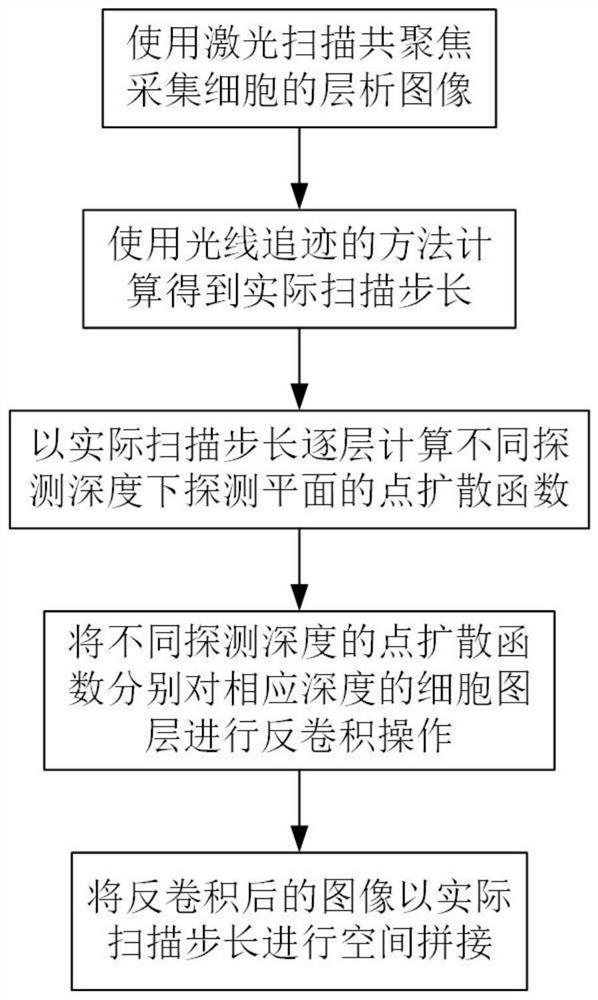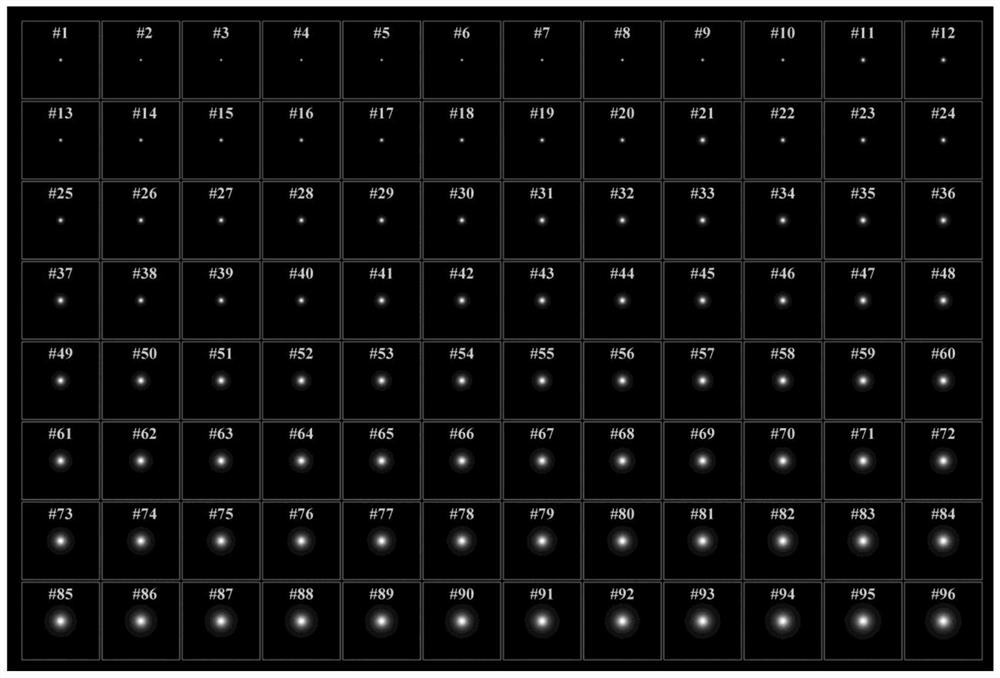Accurate three-dimensional cell morphology recovery method based on depth change point spread function
A technology of point spread function and three-dimensional shape, which is applied to the details of image mosaic, image data processing, graphics and image conversion, etc. It can solve the problems of image quality degradation, inaccurate cell model, and inability to obtain good results, etc., to achieve improvement Image Quality, Increased Accuracy, Enhanced Precision Effects
- Summary
- Abstract
- Description
- Claims
- Application Information
AI Technical Summary
Problems solved by technology
Method used
Image
Examples
Embodiment Construction
[0025] The present invention is described in detail below in conjunction with accompanying drawing:
[0026] refer to figure 1 As shown, the present invention provides an accurate three-dimensional shape recovery method for cells based on the point spread function of depth changes, and the accuracy of the three-dimensional cell model obtained by direct three-dimensional splicing of confocal original cell tomography images with a set scanning step is not high. To solve the problem, a ray tracing method is proposed to analyze the relationship between the actual scanning step and the set scanning step in the imaging process, calculate the actual scanning step, and use the actual scanning step to calculate the detection plane at different detection depths layer by layer. The point spread function of different detection depths is used to deconvolute the cell layer of the corresponding depth to improve the quality of the original image, and the deconvolved image is spatially spliced...
PUM
 Login to View More
Login to View More Abstract
Description
Claims
Application Information
 Login to View More
Login to View More - R&D Engineer
- R&D Manager
- IP Professional
- Industry Leading Data Capabilities
- Powerful AI technology
- Patent DNA Extraction
Browse by: Latest US Patents, China's latest patents, Technical Efficacy Thesaurus, Application Domain, Technology Topic, Popular Technical Reports.
© 2024 PatSnap. All rights reserved.Legal|Privacy policy|Modern Slavery Act Transparency Statement|Sitemap|About US| Contact US: help@patsnap.com










